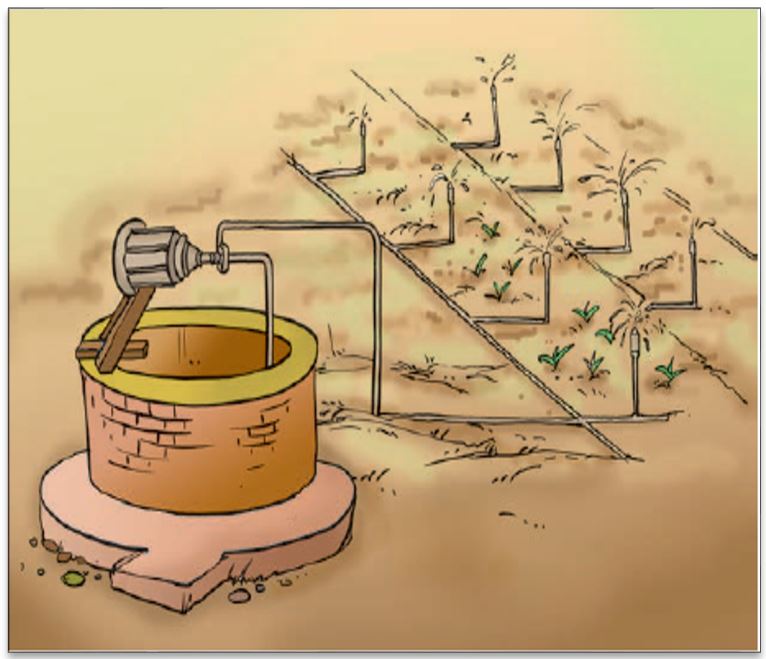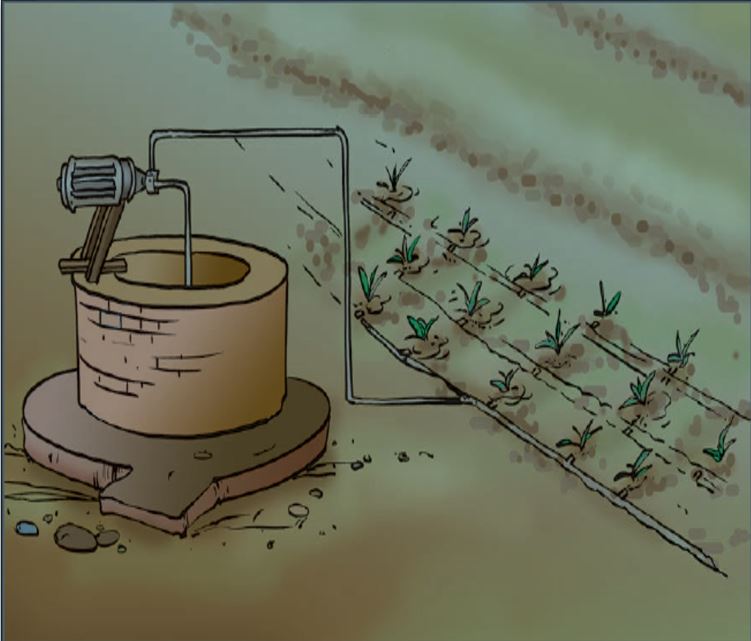Crop Production and Management Class 8 Notes & MCQs
 08-07-2024
08-07-2024
 19:05 PM IST
19:05 PM IST
 Priyanka Chaudhary
Priyanka Chaudhary
In the chapter “Crop Production and Management” different types of crops in India- Rabi and Kharif crops and basic steps of crop production are discussed. At the end of Class 8 Science Chapter 1 notes there are sample MCQs which one should not leave.
Birth of agriculture
Till 10,000 B.C.E. people were nomadic. This means that they were wandering in groups from place to place in search of food and shelter. Later, agriculture was born.
Crop
When plants of the same kind are cultivated at one place on a large scale, it is called a crop. The crops can be classified on the basis of the season in which they grow. In India, crops can be broadly categorised into two types given in the following table.
| Type of crop | Growing season | Examples |
| Kharif crops | Rainy season (Generally from June to September) | Paddy, maize, soyabean, groundnut and Cotton |
| Rabi crops | Winter season (October to March) | Wheat, gram, pea, mustard and linseed |
| Note: Pulses and vegetables are grown during summer at many places. | ||
Basic agricultural practices/basic steps of crop production
The process of crop production involves a number of steps like selection of seeds, sowing, etc.
(1) Preparation of soil
It is necessary to prepare soil by tilling through ploughs and by levelling through levelers. Tilling or ploughing is the process of loosening and turning of the soil. Tilling has following benefits.
- Ensures deep penetration of roots into the soil.
- Helps in the growth of earthworms and microbes present in the soil and called friends of farmers since they further turn and loosen the soil and add humus to it.
- Brings the nutrient-rich soil to the top
The ploughed field may have big clumps of soil called crumbs. Before sowing the seeds, it is necessary to break soil clumps through plough, hoe and cultivator to get better yield
(2) Sowing
Sowing of seeds at appropriate depths and distances gives good yield. Good varieties of seeds are sown after selection of healthy seeds. Sowing is done by seed drills. While sowing, appropriate distance between the seeds avoids overcrowding of plants and allows plants to get sufficient sunlight, nutrients and water from the soil.
(3) Adding manure and fertilisers
Soil needs replenishment and enrichment through the use of organic manure and fertilisers.
- Manure: Manure is an organic substance obtained from the decomposition of plant or animal wastes. Manure is considered better than fertilisers. Its advantages are given below.
Advantages of manure:
- Manure enhances the water holding capacity of the soil.
- Manure makes the soil porous due to which exchange of gases becomes easy.
- Manure increases the number of friendly microbes.
- Manure improves the texture of the soil.
- Manure provides a lot of humus to the soil
- Fertilisers: Fertilisers are chemicals which are rich in a particular nutrient. Some examples of fertilisers are— urea, ammonium sulphate, super phosphate, potash, NPK (Nitrogen, Phosphorus, and Potassium). Fertiliser does not provide any humus to the soil. Use of chemical fertilisers has increased tremendously with the introduction of new crop varieties.
- Crop rotation: It is another method of replenishing the soil with nutrients. In crop rotation, different crops are grown alternately.
Difference between Manure and Fertilizer
| Fertilizer | Manure |
| 1. It is a man-made inorganic salt. | 1. It is a natural substance obtained by the decomposition of cattle dung and plant residues. |
| 2. It is prepared in factories. | 2. It can be prepared in the fields. |
| 3. It does not provide any humus to the soil. | 3. It provides humus to the soil. |
| 4. These are very rich in plant nutrients like nitrogen, phosphorus and potassium. | 4. It is relatively less rich in plant nutrients |
(4) Irrigation
Supply of water to crops at appropriate intervals is called irrigation. Wells, tubewells, ponds, lakes, rivers, dams and canals are sources of irrigation for water. Moat (pulley-system), chain pump, dhekli and rahat (Lever system) are traditional methods (ways) of irrigation. Sprinkler system and drip system are modern methods of irrigation. Following table provides a brief comparison of these modern methods of irrigation.
Difference between Drip Irrigation and Sprinkler irrigation
| Sprinkler system | Drip system
|
| It is more useful on uneven land where sufficient water is not available. | It is a boon in regions where the availability of water is poor. Water is not wasted at all. |
| In this system, water gets sprinkled on the crop as if it is raining. | In this system, the water falls drop by drop directly near the roots. |
| Sprinkler system is very useful for lawns, coffee plantation and several other crops. | It is the best technique for watering fruit plants, gardens and trees. |
(5) Protecting from weeds
Weeding involves the removal of unwanted and uncultivated plants called weeds. Weeds compete with the crop plants for water, nutrients, space, and light and affect the growth of the crop. Weeds are removed manually with the help of Khurpi or controlled by using certain chemicals, called weedicides, like 2, 4-D. Tilling also helps in control of weeds.
(6) Harvesting
Harvesting is the cutting of the mature crop manually or by machines. Separation of the grains from the chaff is called threshing. Farmers with small holdings of land do the separation of grain and chaff by winnowing. Pongal, Baisakhi, Holi, Diwali, Nabanya and Bihu are special festivals associated with the harvest season.
(7) Storage
Proper storage of grains is necessary to protect them from pests and microorganisms. Dried neem leaves are used for storing food grains at home.
Animal husbandry: Food is also obtained from animals for which animals are reared. This is called animal husbandry.
Chapter 1 – Crop Production and Management Class 8 Questions and Answers (MCQs)
1. Which of the following is not an example of Rabi crop?
a. Paddy
b. Maize
c. Mustard
d. Soybean
Correct Ans. c
Explanation:
Mustard is not an example of Rabi crop. Paddy, maize and soyabean are example of Rabi crop. In India, crops can be broadly categorised into two types given in the following table.
2. Which of the following is not an example of Kharif crop?
a. Wheat
b. Paddy
c. Gram
c. Pea
Correct Ans. b
Explanation:
Paddy is not an example of a Kharif crop. Wheat, Gram, Pea, Mustard and Linseed are examples of Kharif crops.
Q3. Which of the following methods of irrigation is best for watering fruit plants, gardens and trees?
a. Sprinkler system
b. Drip System
c. Moat
d. Chain Pump
Correct Ans. b
Explanation:
Drip System is best for watering fruit plants, gardens and trees.
Q4. Which of the following is not an advantage of manure?
a. Manure enhances the water holding capacity of the soil.
b. Manure makes the soil porous due to which exchange of gases becomes easy.
c. Manure increases the number of friendly microbes.
d. Manure does not provide any humus to the soil.
Correct Ans. d
Manures are considered better for the soil than fertilizers as manure increases the water holding capacity of soil and provides humus to the soil.
The above CBSE Class 8 Science Chapter 1 notes will ease your preparation and help you save time. Go through it before the exam in order to revise your chapter.
| NCERT Class 8 Science Chapters |
Frequently Asked Questions (FAQs) about Crop Production and Management
What is a crop?
In which season are Rabi crops grown?
What are the examples of Rabi crops?
What are the examples of Kharif crops?
What is a manure?
Share Blog




 Latest
Latest 
Comments